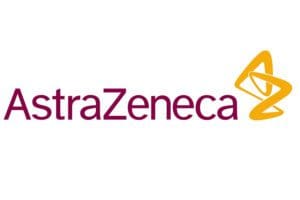 FDA has approved an expanded indication for AstraZeneca’s Farxiga (dapagliflozin). This decision, marking a significant milestone in Farxiga’s development, opens up its use in patients with heart failure, regardless of their ejection fraction status. This brings the total number of Farxiga’s approved indications to five.
FDA has approved an expanded indication for AstraZeneca’s Farxiga (dapagliflozin). This decision, marking a significant milestone in Farxiga’s development, opens up its use in patients with heart failure, regardless of their ejection fraction status. This brings the total number of Farxiga’s approved indications to five.
Ejection fraction in heart failure
Ejection fraction is a key measure of how well the heart is pumping and is used in diagnosing and monitoring heart failure. The recent approval means that Farxiga can be used in patients with heart failure, whether their ejection fraction is preserved (a measure above 40%) or reduced (below 40%).
“Initially, we were indicated for heart failure with reduced ejection fraction (HFrEF), and with the recent extension we received, we are now approved for heart failure with preserved ejection fraction (HFpEF) as well,” says Sarah Walters, VP of U.S. cardiovascular, renal and metabolic diseases at AstraZeneca.
Farxiga’s journey started in 2014, when the FDA first approved it as a treatment for type 2 diabetes. Subsequent approvals expanded its use for treating chronic kidney disease in patients at risk of progression with or without type 2 diabetes, and for reducing hospitalization risk for heart failure in patients with type 2 diabetes.
“It’s amazing to see how the science has evolved. A product that was originally developed to treat diabetes now offers cardio-renal protective benefits,” Walters added.
DELIVER phase 3 study paved way for new indication
The most recent approval was primarily based on the results from the DELIVER phase 3 trial Key investigator Dr. Scott Solomon explained, “DELIVER demonstrated that dapagliflozin, compared with placebo, reduced cardiovascular death or worsening heart failure events in patients with heart failure with mildly reduced or preserved ejection fraction.”
The DELIVER study was summarized in NEJM.
DELIVER “definitively showed that this benefit was obtained regardless of ejection fraction or care setting, suggesting that sodium-glucose co-transporter-2 (SGLT2) inhibitors should be first-line therapy in patients with heart failure with any ejection fraction and in any setting,” Solomon said.

Dapagliflozin was associated with a 14% reduction in cardiovascular death in heart failure patients across ejection fraction spectrums.
SGLT2 inhibitors block the sodium-glucose co-transporter-2 protein in the kidneys, which plays a role in reabsorbing glucose back into the bloodstream. By inhibiting this protein, SGLT2 inhibitors help the kidneys remove excess glucose from the body. In addition to their glucose-lowering effect, SGLT2 inhibitors have been found to have significant cardiovascular and renal benefits.
AstraZeneca researchers observed “potential in the early diabetes trials where they observed signals for kidney and heart benefits,” Walters said. “And we have seen mortality benefit in both our chronic kidney disease trial as well as our heart failure trial.”
AstraZeneca believes the dapagliflozin expansion has the potential to significantly impact the treatment landscape for heart failure in the U.S. “We are excited about the positive impact this approval will have on the lives of patients with heart failure, especially those with HFmrEF and HFpEF,” Walters said.
The role of dapagliflozin in the current treatment landscape
Solomon, who also serves as a professor of medicine at Harvard and Brigham and Women’s Hospital, discussed dapagliflozin within the context of the heart failure treatment landscape. He identified four pillars of therapy for patients with heart failure with reduced ejection fraction: beta blockers, mineralocorticoid receptor antagonists, angiotensin-converting enzyme (ACE) inhibitors or angiotensin receptor blockers (ARBs) or sacubitril/valsartan as well as SGLT2 inhibitors. Among these, he highlighted that “SGLT2 inhibitors, of which dapagliflozin is one, have shown substantial and incremental benefits in terms of morbidity and mortality when added to the standard of care therapy.”
Farxiga’s impact on mortality was also underlined. Solomon explained that “dapagliflozin significantly reduced cardiovascular death by 14% with no evidence of heterogeneity across ejection fraction.” He noted, however, that it remains unclear whether this benefit is directly related to the drug or to the patient population and trial characteristics.
Looking forward, Walters shed light on the future exploration of Farxiga’s capabilities. “We do intend to continue to explore using it in cardio renal disease through combinations with other products,” she said, underscoring the ongoing commitment to developing Farxiga as a foundational therapy for heart failure and related conditions.
Ongoing and planned research on dapagliflozin
Solomon shared his perspective on ongoing and planned research, stating, “We continue to analyze and present important data from the dapagliflozin heart failure program (DAPA-HF and DELIVER) and will present about a dozen new papers next week in Prague at the European Society of Cardiology Heart Failure meeting.” He also mentioned that there are ongoing additional studies testing dapagliflozin in patients with recently decompensated heart failure (DAPA-ACT) and in patients following myocardial infarction (DAPA-MI).
Walters expressed her anticipation for the further strengthening of Farxiga’s position in the market and its contribution to these research projections. “We are researching Farxiga in combination with some other products in our pipeline. So, we are researching it in combination with zibotentan in chronic kidney disease, and we are researching it in combination with balcinrenone for heart failure disease. We do see it as a very important ongoing foundational therapy,” she said.
The future of Farxiga: Combinational therapy and potential market impact
This milestone approval is expected to propel Farxiga’s sales. Prior to the most recent approval, GlobalData projected the drug would reach peak sales of $9 billion by 2028. Farxiga has maintained a strong sales performance and consistent growth in recent years. For instance, the drug generated $4.6 billion in sales in 2022 and grew 30% between 2017 and 2018. The FDA’s approval of Farxiga for heart failure with reduced ejection fraction (HFrEF) resulted in a surge in its sales by a third to $525 million in the third quarter of 2020. The new approval is anticipated to stoke stronger sales.
The latest approval of Farxiga for an expanded indication in heart failure treatment could position it as a potential first-line therapy for heart failure patients. Ongoing and planned research could expand its influence on heart failure outcomes. “We see it as an important ongoing foundational therapy,” Walters concluded.

Farxiga now has five indications
Filed Under: Cardiovascular, clinical trials, Drug Discovery, Drug Discovery and Development





Tell Us What You Think!
You must be logged in to post a comment.